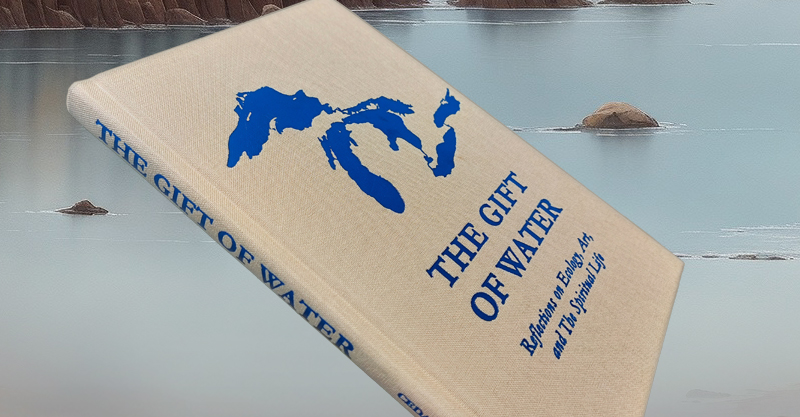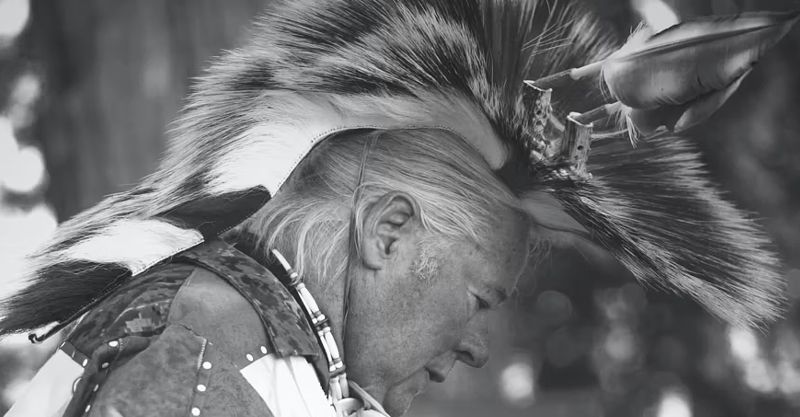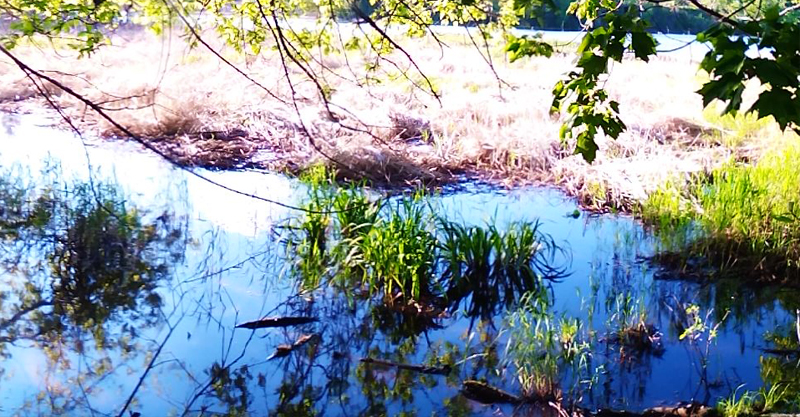from Marquette Monthly December, 2007
Leaders converge on lake topic
Canal Street is one of the jewels of Duluth’s commercial district. Located on the water’s edge of Lake Superior’s largest port city, perched on foundations of old industrial docks, it’s a glistening neighborhood of upscale art galleries, restaurants, gift shops and bookstores.
On this brisk October morning, 500 technicians, government officials, environmentalists and researchers are shuffling through registration lines at the Duluth Entertainment Convention Center. They’ve traveled from Chicago, Toronto, Ottawa, Minneapolis and dozens of universities and government agencies for the 2007 “Making a Great Lake Superior Conference.” Workshops, panel discussions, films, art displays and informal conversations shape the agenda. This is the first time since 1990 that the USEPA (United States Environmental Protection Agency) has sponsored such a gathering. There’s plenty to talk about.
Alarming evidence is pointing to unprecedented global weather changes affecting Lake Superior water levels. There’s documentation verifying troublesome losses of natural habitat, devastating impacts of invasive aquatic species, threats of atmospheric pollution and the touchy subject of water shortages in the Southwest with Lake Superior suddenly appearing on the radar screen as a potential source for water diversion. However you cut it, there’s wide agreement there will be dramatic changes in how all of us in the Great Lakes Basin will live together during the years ahead.
Previews of hard data and evidence-based research triggering this binational gathering carry one clear, underlying message. These days Lake Superior is teaching us about the urgent need for a new environmental consciousness.
Celebrating a fragile gift
The morning’s conference agenda begins with the requisite nod to sponsors and conference organizers, but even the most detached observer in the room can feel a palpable sense of urgency: There’s unspoken consensus that Lake Superior ranks among the world’s most magnificent natural resources, and citizens of the Great Lakes Basin have been suddenly entrusted – during this peculiar time of global-driven, head-spinning transition – with a mission to protect and sustain it collectively.
Superior’s statistics are familiar to most of us who live along her shorelines, bays and harbors. During days of global oil and water shortages, they warrant revisiting: The Water Heritage Trust reports that salt water makes up ninety-seven percent of all water on earth. Fresh water makes up the remaining three percent of all water found on our planet and nearly seventy percent of that is locked up in arctic ice. Lake Superior, astonishingly, holds ten percent of the remaining fresh water in the world. It holds the record for the largest surface area (34,000 square miles) of any freshwater lake on earth and, most importantly, as the headwaters of all the Great Lakes, it forever will determine the ultimate health and condition of Lakes Michigan, Huron, Erie and Ontario.
Deb Swackhamer from the University of Minnesota’s Institute on the Environment helps kick off the morning presentations by reminding the audience that several distinct characteristics contribute to the little-known fact that Superior is, ironically, more fragile and susceptible to pollution than the other Great Lakes. Its year-round cold temperatures prevent certain chemicals and contaminants from volatizing and breaking down as in warmer waters. Its large surface area, combined with continental wind patterns, ends up as a special target for pollutants carried by global weather changes. (Some of these dangerous contaminants like dioxin have been traced from pollution-spewing factories as far away as China.)
Another special concern is that during the last fifty years, Lake Superior has provided destination ports for the bustling international shipping industry. Ballast waters from foreign sea vessels are regularly discharged into harbors like Thunder Bay and Duluth. We’ve recently discovered that such ballast water, more often than not, carries deadly viruses, algae and other invasive aquatic species. We’re beginning to realize that for years we’ve been allowing, unwittingly, the cleanest water left in the world to serve as a toxic dumping ground. Clean-up is costing us billions of dollars.
This particular government-sponsored conference, like most, is front-loaded with scientific data, and heavy-weighted with technical power-point presentations. But Liz LaPlante, the USEPA regional team manager for Lake Superior, takes time to point out to participants that conference planners have sought to model a “shift of consciousness” with the logistical side of things. Meals have been prepared with local and regional produce. Everything possible is being recycled. Most of the technical information has not been reproduced in hard copy, but appropriated to CD or Internet availability. Accommodations for attendees are within walking distance.
A few components to this gathering catch my special attention. There’s an international honoring of tribal representatives from the nearby Ojibway Indian community from Fond du Lac (Minnesota). They open the conference with drums and blessings. Their leader, dressed in worn blue jeans, a plaid shirt and a baseball cap, appears disarmingly relaxed in this formal setting. His matter-of-fact presence points to an integrity of unpretentious people who, for hundreds of years, have lived as first custodians of these lands and lakes.
There’s an art exhibition set up by Lake Superior’s Binational Forum member Dave Schnell. His vision long has been to bring a third dimension to more technical discussions on environmental topics about the future of the Great Lakes. Schnell is undaunted in his conviction. In past small group work meetings, I’ve watched him bring poets, writers and artists to add an unusual depth to what often has ended up as hours of tedious reporting and political maneuvering. His improvised gallery, located next to the registration area, is a mystical kaleidoscope of Native art, paintings and illustrations by regional artists.
John and Ann Mahan, authors and photographers, are scheduled for a presentation on the third night of the conference. I first saw and heard their slide and sound narration “Lake and Spirit” ten years ago one evening on Minnesota’s North Shore. They sparked memories from my boyhood days roaming under miles of Superior’s remote granite and sandstone cliffs. Later that same night, I entered into my journal the Mahan’s recollection of an Ojibway elder who once whispered to them, “Even the stones speak to the Strong Ones.”
The conference promises to be intense and full. I walk up to my hotel across the overpass (I-35) and pass a homeless man slouched against the side of a bank building. I think about competing visions, colliding realities of detached, emotionless scientific language that characterizes academic settings, of rigid dogmas that stifle and isolate religious communities, of this region’s abandoned logging towns and contaminated mines, the addiction of us all to lifestyles of unfettered consumption, and a world still mostly indifferent to questions of compassion, justice and balance.
The human health connection
I’m taking a break this afternoon from conference proceedings to spend some time at a coffee shop adjacent to Lake Place Park, not far from the ore freighter William A. Irvin, a ship now harbored and refitted for daily tourist visits and occasional dinner parties. In front of me lies a copy of Paul Hawken’s Blessed Unrest, a riveting history of the modern environmental movement in America.
Hawken traces early environmental consciousness, as we now understand it, to the mid, 1800s. He notes these efforts initially were an expression of the upper class and elicited little public backlash. In those days, America’s frontier was expansive. If someone wanted to preserve trees or streams in the far off West, it was of little concern for most citizens of a newly emerging nation. We were busy claiming cheap land for homesteads, building cities and fighting among ourselves about the morality and future of slavery as a profitable American commercial enterprise.
Hawken especially notes the influence of Emerson and Thoreau, who played key roles as part of a reaction to America’s growing nineteenth century urban culture. Both theses writers and poets were evangelists for a new, peculiar blend of American spiritual and nature romanticism.
These early efforts were about preserving a sense of wilderness and spirit. In the early twentieth century, President Teddy Roosevelt, an avid hunter and outdoorsman, continued to spread the same sentiment, this time with real political muscle. The legacy: we now have on the southern and northwestern coastal regions of Superior two national shorelines and two national parks – the Apostle Islands, Pictured Rocks, Keweenaw National Historical Park and the crown jewel of the entire national park system, Isle Royale.
One still can spot the historical spin-off from the early environmental movement’s more elitist origins between lines of heated public debates on environmental protection efforts. Opportunists like talk-radio’s Rush Limbaugh and mass-media pundits like Cal Thomas have become popular (and embarrassingly wealthy) spokespersons for millions of working middle-class citizens by sarcastically ridiculing current attempts by the privileged (Hollywood types, movie stars and philanthropists) to carry on crusades to save plants, trees and polar bears.
In the early- to mid-twentieth century, the original preservation movement morphed into a more formalized conservation effort. This new environmentalism included regulations on hunting, harvesting of lumber, and protection of sustainable agricultural practices. The conservation movement became more acceptable because of its evolving compromise with political and business interests. For the most part, however, it still remained a minor theme in a growing industrial landscape. Until the 1960s, it never connected with the majority of the American public with the exception of “Smokey Bear” billboards, Boy Scout and Girl Scout outings and an occasional national issue raised by weekend hunters and sports fishermen.
In the late 1950s, however, a book published as a series of articles in the New Yorker by a little known government marine biologist shook the political landscape. In Silent Spring, Rachel Carson first publicly identifies the impact of pesticides on human health. She lifted up a haunting vision of a stark, barren landscape where no bird song would be heard. A prophetic voice, initially she was marginalized by many of her colleagues, then viciously and systematically attacked in the media by the numerous chemical companies that were implicated.
It was too late. Carson, herself now riddled with cancer, had made her point. Backed by irrefutable scientific evidence, parents began to make connections between the environment and the health of their children. The world would never be the same. It only took a few years (1970) until the EPA was born in national legislation. With it, literally thousands of regulations and laws came into being governing how we are to live with the natural environment.
Carson’s predictions indeed were frightening, but not unfounded. Atlanta’s Center for Disease Control now estimates eighty percent of cancers are triggered by environment factors. We are discovering that what we eat, the air we breathe, the way we exercise and relate to our communities directly impacts our health in ways we never imagined.
Candace Pert, a molecular biologist at Georgetown University Medical Center and an award-winning AIDS researcher, underscores the urgency to connect natural environments with human health. She describes in chilling detail how the impact of accumulated environmental pollutants within our bodies mimic and disrupt the action of sex hormones like estrogen and testosterone. Pert states there’s evidence suggesting a direct relationship of these chemical interactions with increases of breast and prostate cancers. She writes in Molecules of Emotion, “The choices we make about how we live are at least as valuable as the high-tech interventions of the biomedical establishment, especially because they may minimize the need for such interventions.”
Still, the relationship of environment to health remains fuzzy in public consciousness. Connections are just not there for most people. Edmond Wilson, one-time professor of entomology (the study of insects) and Pulitzer Prize winner, calls this peculiar problem one of “Exceptionalism.” Wilson states such an attitude takes two forms – one secular, the other religious. The secular version goes like this: “Human intelligence and creativity will figure out the environmental challenges and we’ll all by fine.” The religious version is “God will take care of everything.” Wilson firmly believes both are dangerous distortions of perception rooted in human egocentricity. Both separate us from embracing how we live with the earth. Both distract us from being engaged in a practical, common search for healthy balance.
After fifty years of research on topics about the natural world, Wilson is convinced there must be a new alliance of religion with science if we’re to avoid unparalleled disaster both to human health and the environment. Such an “awakening” is the only thing, he says, that will save us.
The great turning
The conference in Duluth is nearing its conclusion. Seventy-one cities and communities, two countries and dozens of federal and state governments are represented. Looking in from the outside, it may look to some like just another example of scientists and government officials talking to themselves.
But something else has been going on. Scientific presentations overlap, workshops include interdisciplinary conversations, sophisticated feedback loops link concurrent presentations, a steady rhythm of dialogue and networking. The environmental sector at work during this conference is modeling something we still are learning from Nature herself: Everything is connected.
Thomas Berry, the Roman Catholic theologian, refers to this shift of perception in our times as “The Great Turning.” He points to a recovery of essential respect, a new reverence for the natural world. And with it a new commitment to care for and honor the Earth as our true home.
For those following current events in Michigan’s Upper Peninsula, the ongoing controversy around a proposed nickel mine by Kennecott Mineral Corporation is confirmation of Berry’s keen observation. Kennecott’s proposal has drawn unexpected, overwhelming scrutiny and media attention from across North America. Tens of thousands of voices have responded to Kennecott’s application, now being evaluated by Michigan’s Department of Environmental Quality (DEQ).
In the heat of public debate, proponents for the mine frequently label opponents as “environmentalists.” For years, many rural and economically strapped citizens of our region have accepted this line of reasoning without question because many working people have written off “environmentalism” as another effort by upper class “preservationists.” Things have changed. This time around, it’s not working.
In spite of a bitter battle over legal issues that ultimately may determine the mine’s viability, ordinary citizens, fishermen, loggers, physicians, religious leaders and retired teachers have stood alongside 475 citizens of Powell Township to say this mine is not the right thing for this place at this time. Twelve Native American Indian tribes in Michigan are part of this alliance of resistance that stands in firm opposition.
Whether the mine is approved or not, citizens in opposition to Kennecott have joined together in a dynamic weave of public health concern, spiritual consciousness and hard science. They’ve cracked the financial numbers, measured the costs and come to a conclusion based on more than a single profit line. Their platform of resistance is built on a careful assessment of health threats, social concerns for a rural neighborhood and serious threats to Lake Superior’s watershed. Together, citizens have formed a united front never seen in this part of the world.
The EPA conference has come to a close. It’s shortly before dawn and time to begin the journey home to Marquette. In the shadows of a parking lot, I glance at an oversized, gas-guzzling motor home. Its bumper sticker reads, “Don’t worry about us. We’re spending our children’s inheritance.” I’ve seen such bumper stickers before. In the past they’ve usually elicited from me a sardonic smile. Not this time.
Edmond Wilson, the retired entomologist, at the close of The Creation, offers a prediction. The good news is that because of the inevitable coming shortage of basic natural resources, our grandchildren will cherish and love the earth in ways we will never comprehend. The bad news is that they will disdain our generation, which, driven by greed and narrow self-interests, has squandered for short-term profits the precious natural resources given us.
The early morning sun is beginning to rise in the East. Driving onto the city’s overpass that leads to US-2, I have no doubt this gathering in Duluth, packed with scientific presentations, government officials, artists and tribal leaders, soon will be forgotten, its records buried under masses of government protocol. But the real news is that a beloved lake is speaking. And people are beginning to listen.
– Jon Magnuson
December 2007







